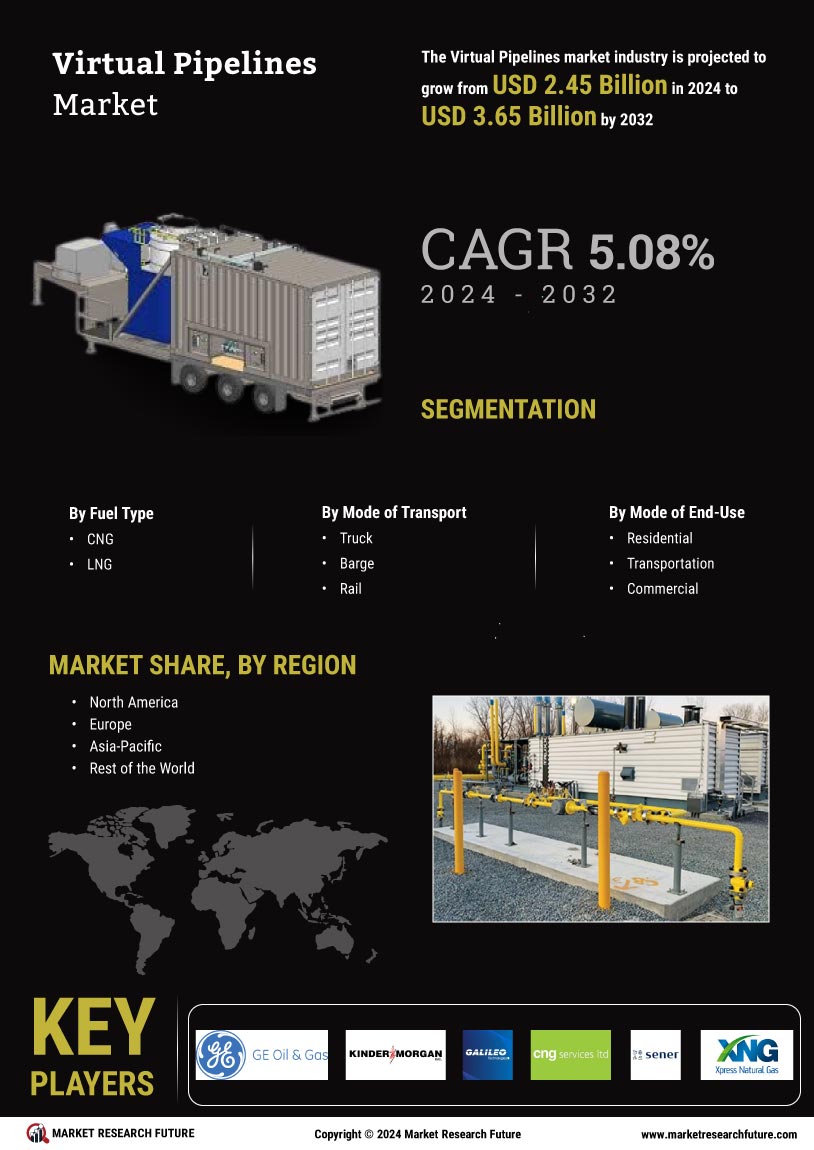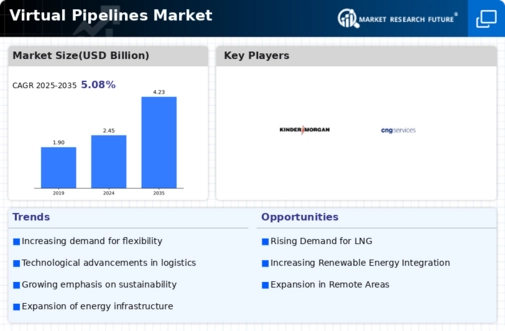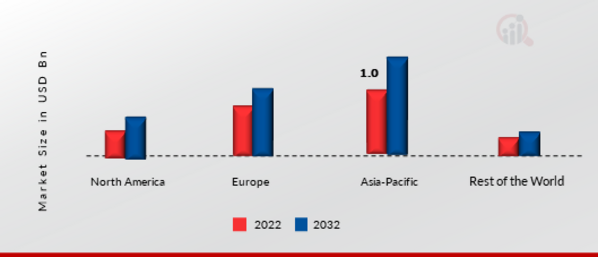Market Growth Projections
The Global Virtual Pipelines Market Industry is poised for substantial growth, with projections indicating a market value of 2.45 USD Billion in 2024 and an anticipated increase to 4.23 USD Billion by 2035. This growth trajectory suggests a compound annual growth rate (CAGR) of 5.1% from 2025 to 2035. Such figures reflect the increasing reliance on virtual pipelines as a viable solution for natural gas transportation, particularly in regions where traditional infrastructure is lacking. The market's expansion is likely to be driven by technological advancements, regulatory support, and rising energy demands, positioning virtual pipelines as a critical component of future energy strategies.
Growing Demand for Natural Gas
The Global Virtual Pipelines Market Industry experiences a notable surge in demand for natural gas, driven by its cleaner combustion properties compared to coal and oil. As countries strive to reduce carbon emissions, the transition towards natural gas is becoming increasingly prevalent. In 2024, the market is projected to reach 2.45 USD Billion, reflecting the growing preference for natural gas as a primary energy source. This shift is particularly evident in regions where traditional pipeline infrastructure is lacking, making virtual pipelines an attractive alternative for transporting gas. The industry's growth is likely to continue as natural gas becomes a cornerstone of energy strategies worldwide.
Rising Energy Demand in Emerging Markets
The Global Virtual Pipelines Market Industry is significantly influenced by the rising energy demand in emerging markets. As these economies grow, their energy consumption patterns evolve, necessitating innovative solutions for energy distribution. Virtual pipelines present a practical approach to meet this increasing demand, particularly in regions lacking extensive pipeline networks. The ability to transport natural gas efficiently and effectively positions virtual pipelines as a key player in addressing energy needs. This trend is expected to drive market expansion, with a notable increase in investments aimed at developing virtual pipeline infrastructure to support the burgeoning energy requirements of these markets.
Technological Advancements in Transportation
Technological innovations play a pivotal role in the Global Virtual Pipelines Market Industry, enhancing the efficiency and safety of gas transportation. Advances in compression technology and digital monitoring systems enable more effective management of virtual pipeline operations. These improvements not only reduce operational costs but also increase reliability, making virtual pipelines a viable option for energy distribution. As these technologies evolve, they are expected to attract more investments, further propelling market growth. The integration of smart technologies could potentially lead to a more streamlined and responsive supply chain, catering to the dynamic needs of consumers and industries alike.
Regulatory Support for Clean Energy Initiatives
Regulatory frameworks supporting clean energy initiatives significantly influence the Global Virtual Pipelines Market Industry. Governments worldwide are implementing policies that encourage the adoption of cleaner energy sources, including natural gas. This regulatory support is crucial in facilitating the development of virtual pipelines, as it provides a conducive environment for investment and innovation. As a result, the market is anticipated to grow steadily, with projections indicating a rise to 4.23 USD Billion by 2035. Such policies not only promote environmental sustainability but also enhance energy security, making virtual pipelines an integral part of future energy infrastructure.
Increased Investment in Infrastructure Development
Investment in infrastructure development is a critical driver of the Global Virtual Pipelines Market Industry. As countries seek to enhance their energy distribution networks, virtual pipelines offer a flexible and cost-effective solution for transporting natural gas. This is particularly relevant in regions where traditional pipeline construction is economically or logistically challenging. The anticipated compound annual growth rate (CAGR) of 5.1% from 2025 to 2035 underscores the potential for growth in this sector. Increased funding for infrastructure projects not only supports the expansion of virtual pipelines but also fosters economic development and job creation in related industries.













